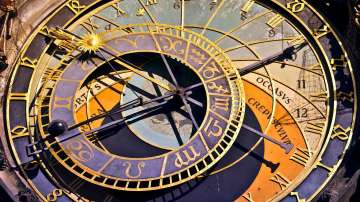Arrived! World’s first time-travelling app that can take you back 750 years in time, virtually
All of us, at some point or the other, have wondered about travelling back to the old days. Cut to reality and the thought has been rendered the stuff best left to the movies and a better part of our imagination.
London: All of us, at some point or the other, have wondered about travelling back to the old days. Cut to reality and the thought has been rendered the stuff best left to the movies and a better part of our imagination. It has always been something that is considered beyond our reach.
Now, a new virtual reality application can take you up to 750 years back in time. The Timelooper app allows users to experience key moments in London history with just a smartphone and a cardboard headset.
For instance, if the co-founder of Timelooper -- Andrew Feinberg – visits the Tower of London, he doesn't queue up with hordes of tourists to catch a glimpse of the royal family's crown jewels. Instead, he uses Timelooper's time travel tourism app to experience the tower over 750 years ago, in 1255.
Instead of seeing a busy London tourist site, Feinberg sees a medieval marketplace, a formidable fortress, even an elephant being led down a path.
"We actually overlay the current infrastructure with what the infrastructure of the tower and the surrounding environment was like in 13th century London," explained Feinberg.
"So for example, now you see a Starbucks and now you see the tower as it looks today with the moat drained. When we take you back in time, you actually see the historically accurate representation of the tower in its heyday."
Not far away at St Paul's Cathedral, Timelooper users travel back to the Great Fire of London 350 years ago, in 1666. The fire burned for four days, destroying over 13,000 houses.
The smartphone's built-in motion detection allows time travellers wearing a cardboard headset to move their gaze around the virtual world, seemingly exploring London centuries ago. The videos are location-based, meaning visitors must visit the sites to unlock the historical experiences.
Feinberg and his cofounder, Yigit Yigiter, were frustrated with current tourism technology, which they say hasn't evolved much since the introduction of audio guides. In 2014, Yigiter's wife brought home a Google cardboard VR headset, and he began thinking about an immersive virtual reality tourism experience. By September 2015, he'd quit his job in private equity and moved to the British capital to begin work on the first incarnation of the app. The first version was launched in July 2015 and featured three sites.
While Timelooper uses VR to offer a unique historical perspective, the technology has been exploding in many directions throughout the tourism industry. Carnival Cruise Line uses it to market cruises, the Dollywood theme park in Tennessee uses it to show off a new rollercoaster, and the Seattle Space Needle uses it to help visitors appreciate the view from its sky-high observatory. The Dali Museum in Florida created a virtual reality experience that lets visitors walk through a landscape painting by the Surrealist master Salvador Dali. And a company called YouVisit has created over 300 VR experiences for destinations from Vatican City to Mexico.
Timelooper is a member of the Travel Tech Lab, an incubator space for travel technology start-ups, partly created by London & Partners, the city's official promotional company. Following the launch last year, Feinberg and Yigiter were contacted by destinations from China to Spain.
"Nothing replaces the experience of being on site, but you don't always know what the stories are about those sights," Yigiter said.
Timelooper's travel app is also used by those working in London's booming tourism industry. Blue Badge tourist guide Ruth Polling pulls her cardboard headset out as she escorts visitors to Trafalgar Square and lets them see what happened on September 23, 1940, when a bomb dropped by Nazi Germany exploded near Nelson's Column, a famous landmark and iconic part of the victory celebrations held five years later to mark the end of the war in Europe.
(With AP inputs)
